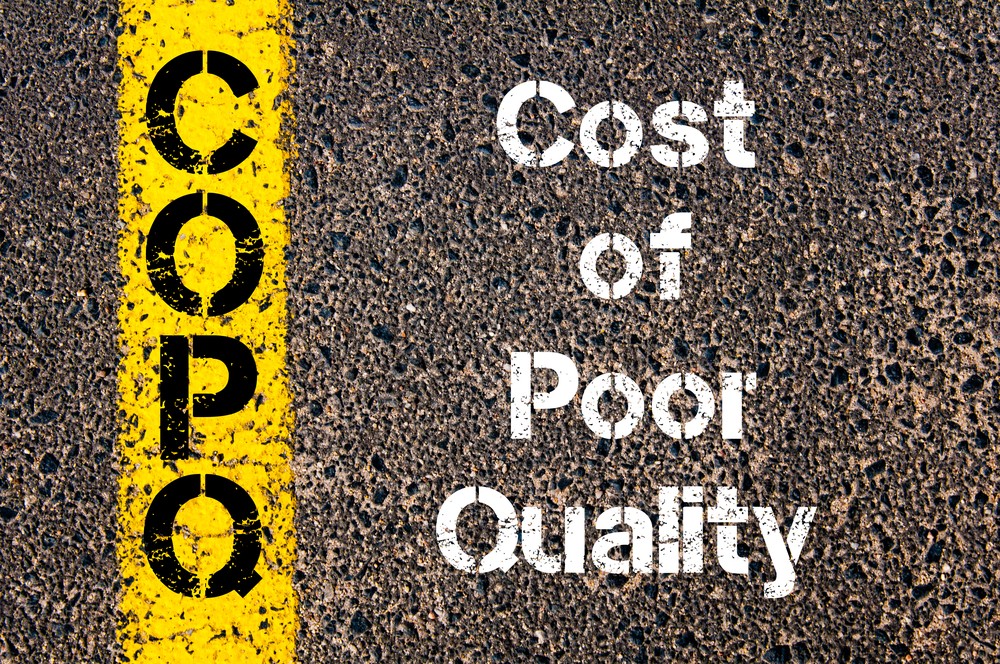What is the Cost of Poor Quality?

Keeping costs low is part of doing business. In manufacturing, the lower the cost of production, the more downstream control producers have over pricing and margins. But cutting upstream costs can sometimes cause more problems than it solves — especially if cuts affect production quality. When manufacturers seek to cut costs, it’s essential to consider the cost of poor quality.
The cost of poor quality (COPQ) isn’t always a surface-level, visible cost, but it is one manufacturers will pay if they’re too liberal trimming the fat elsewhere. Quality has significant bearing on a company’s ability to make a product customers want and are willing to pay for. Often, a race to the bottom on costs has negative consequences for product quality.
Defining the COPQ
The COPQ is the financial loss a company accrues due to inconsistencies, defects, and other product issues. Common costs associated with poor quality include the price of reworking, replacement, and repair — and, in the worst cases, the cost of recall and reimbursement.
Ultimately, poor quality issues also damage a company’s reputation and cost them future business. Simply put, COPQ is hard to measure but almost certainly significant. It’s best described as the opportunity cost of doing things on the cheap.

Costs associated with quality
For measurable, traceable costs associated with product quality, there are four specific qualifiers: appraisal costs, prevention costs, internal failure costs, and external failure costs. Each occurs at a different stage of the value stream. A clear understanding of these costs makes it easier for manufacturers to avoid the bad and justify the necessary.
- Appraisal costs. Appraisal costs, including testing and inspections, pay for methods of detecting product quality. Companies use appraisal cost methods to ensure all products meet industry standards. These are a cost of good quality.
- Prevention costs. These are the costs associated with taking corrective action to solve a problem and prevent future failure costs. It’s a good cost and typically involves equipment maintenance and/or production process redesign.
- Internal failure costs. These costs occur when product defects are identified prior to shipping. Resolving defects can incur costs for reworking, repairs, retesting, and internal scrapping.
- External failure costs. These costs accrue after one or more customers discover product defects. External failure costs are the most significant of the product quality costs and include warranty fees, costs of repair and/or service, complaint resolution, and refund or return processing.
It’s easy to avoid these quality costs. They usually originate from cost-cutting efforts elsewhere within the company. By identifying which cutbacks hinder product quality, manufacturers can correct production issues before they occur.

Quality is worth the cost
Most manufacturers stake their reputations on product quality. They take pride in their work and implement systems designed to mitigate errors and prevent product defects. But producing a superior product costs money. This is the “cost of quality,” and it’s more than worth the investment to offset the COPQ.
Product quality is particularly important in challenging times. Approach cost-cutting measures with a priority on preserving quality control, and remember: Investing — or reinvesting — in quality is never a bad idea.
